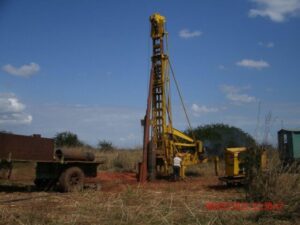 Six new sites for the drilling of wells were identified this year by specialists and technicians from the Hydraulic Exploitation Enterprise in Guantanamo, with the aim of increasing the use of underground water in the face of the lengthening of the dry periods, a reality related to climate change.
Six new sites for the drilling of wells were identified this year by specialists and technicians from the Hydraulic Exploitation Enterprise in Guantanamo, with the aim of increasing the use of underground water in the face of the lengthening of the dry periods, a reality related to climate change.
Yinet Marzo Manuel, technical director of that entity, specified that of the identified sites, four were carried out at the request of the Imías Aqueduct and Sewer Base Business Unit for the supply to the population, and the rest were requested by an independent agricultural producer from Guantanamo.
She explained, these evaluations remain pending until December, six other sites that were agreed with the Lino de las Mercedes Álvarez Credit and Services Cooperative, also from Imías, a municipality situated at the southern coastal strip known as the Cuban semi-desert.
For a couple of decades, in Guantanamo, 16 hydrogeological sectors or groundwater sources have been identified, of which are of national interest because they are the most exploited, Sierra Canasta, which covers part of the Niceto Pérez Municipality; Terraza Sabanalamar, in San Antonio del Sur, and Terraza, Imías.
In general, she clarified, underground water sources are scarce in the province, due to the characteristics of the relief and the poorly permeable nature of the subsoil rocks and barely six percent of quality water is used.
The drilling of wells in the territory is contracted to specialized brigades from other provinces by the organizations or individuals that require them for their activities, which partly explains the incipient use of these sources in the territory.